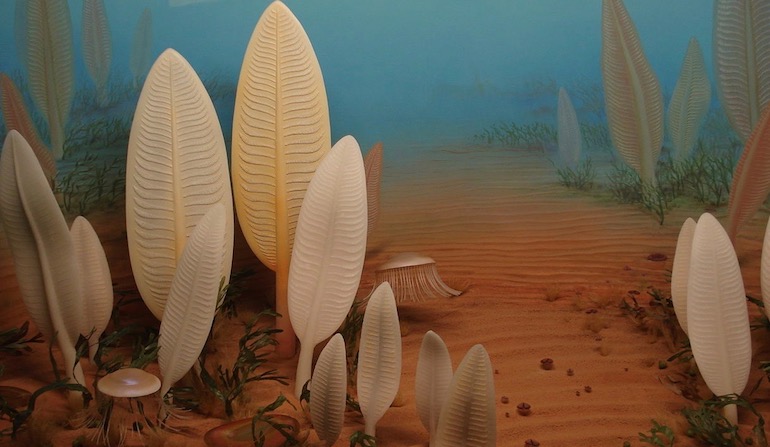 Intelligent Design
Intelligent Design
Cambrian-Aged Ediacaran Organism Reconfirms Explosiveness of the Cambrian Explosion

According to a new paper in the journal Palaeontology, for the first time it has been discovered that an organism from the Precambrian Ediacaran fauna may have survived into the Cambrian period. Some have proposed that the strange Ediacaran organisms were evolutionary precursors to the animals that appear in the Cambrian explosion, but this hypothesis has been highly disputed.
Evolutionary Precursors?
In Darwin’s Doubt, Stephen Meyer explained:
Most paleontologists doubt that well- known Ediacaran forms represent ancestors of the Cambrian animals and few think the late Precambrian fossil record as a whole makes the Cambrian explosion appreciably less explosive.
…[As] paleontologist Andrew Knoll and biologist Sean B. Carroll have argued: “It is genuinely difficult to map the characters of Ediacaran fossils onto the body plans of living invertebrates.” Although many paleontologists initially showed interest in the possibility that the Cambrian animal forms might have evolved from the Ediacaran organisms, paleontologist Peter Ward explains that “later study cast doubt on the affinity between these ancient remains preserved in sandstones [the Australian Ediacaran] and living creatures of today” (that is, animals representing phyla that first arose in the Cambrian). As Nature recently noted, if the Ediacaran fauna “were animals, they bore little or no resemblance to any other creatures, either fossil or extant.”
(Darwin’s Doubt, pp. 79, 84-85)
Similarly, the technical paper about this Cambrian-aged Ediacaran fossil notes that “‘bizarre’ Ediacaran morphologies and mouldic preservation have frustrated comparison to later taxa” and observes that “evolutionary relationships of the Ediacaran macro‐biota have remained unresolved.”
Unlike Living Animals
The Cambrian-aged fossil that was discovered, Stromatoveris, is similar to other Ediacaran organisms in that it is fronded, containing “petaloids.” This morphology is unlike living animals, and the authors don’t think that the Ediacaran fauna are highly similar to modern animal phyla that appear in the Cambrian explosion. As Science reports:
They found that Stromatoveris and the other Ediacaran organisms don’t belong to any living animal group or “phylum.” Instead, they cluster on their own branch in the animal evolutionary tree, between the sponges and complex animals with a digestive cavity like worms, mollusks, and vertebrates, the team reports today in Palaeontology. “This branch, the Petalonamae, could well be its own phylum, and it apparently lacks any living descendants,” [Jennifer] Hoyal Cuthill says.
Some folks disagree with the interpretation that there are Ediacaran animals in the Cambrian:
Geobiologist Simon Darroch at Vanderbilt University in Nashville is also comfortable with the idea that the Ediacaran organisms were animals and that a few survived into the Cambrian. But on a first look he is not convinced that Stromatoveris was one such survivor; he thinks the evidence that it had the fractal architecture of an Ediacaran organism isn’t strong — yet he’s open to persuasion.
“Not Quite So Neat Anymore”
The Science article also notes that this discovery demolishes one explanation for the abrupt evolution in the Cambrian period:
If the new conclusion settles one mystery, though, it introduces another. The Ediacaran organisms represent the first major explosion of complex life on Earth, and they thrived for 30 million years. Their demise has been linked to the appearance of animals in the Cambrian Explosion, Hoyal Cuthill says. But that simple explanation doesn’t work as well if Ediacaran organisms were animals themselves, and some were still alive tens of millions of years later. “It’s not quite so neat anymore,” she says. “As to what led to their eventual extinction I think it’s very hard to say.”
But were the Ediacaran organisms actually animals? That still seems to be in dispute, and finding this strange, fronded fossil organism in Cambrian strata certainly doesn’t settle the debate. All it really shows is that the enigmatic Ediacaran fauna lived longer than we previously thought they had.
Image: Precambrian life, by Ghedoghedo [CC BY-SA 3.0 or GFDL], from Wikimedia Commons.

